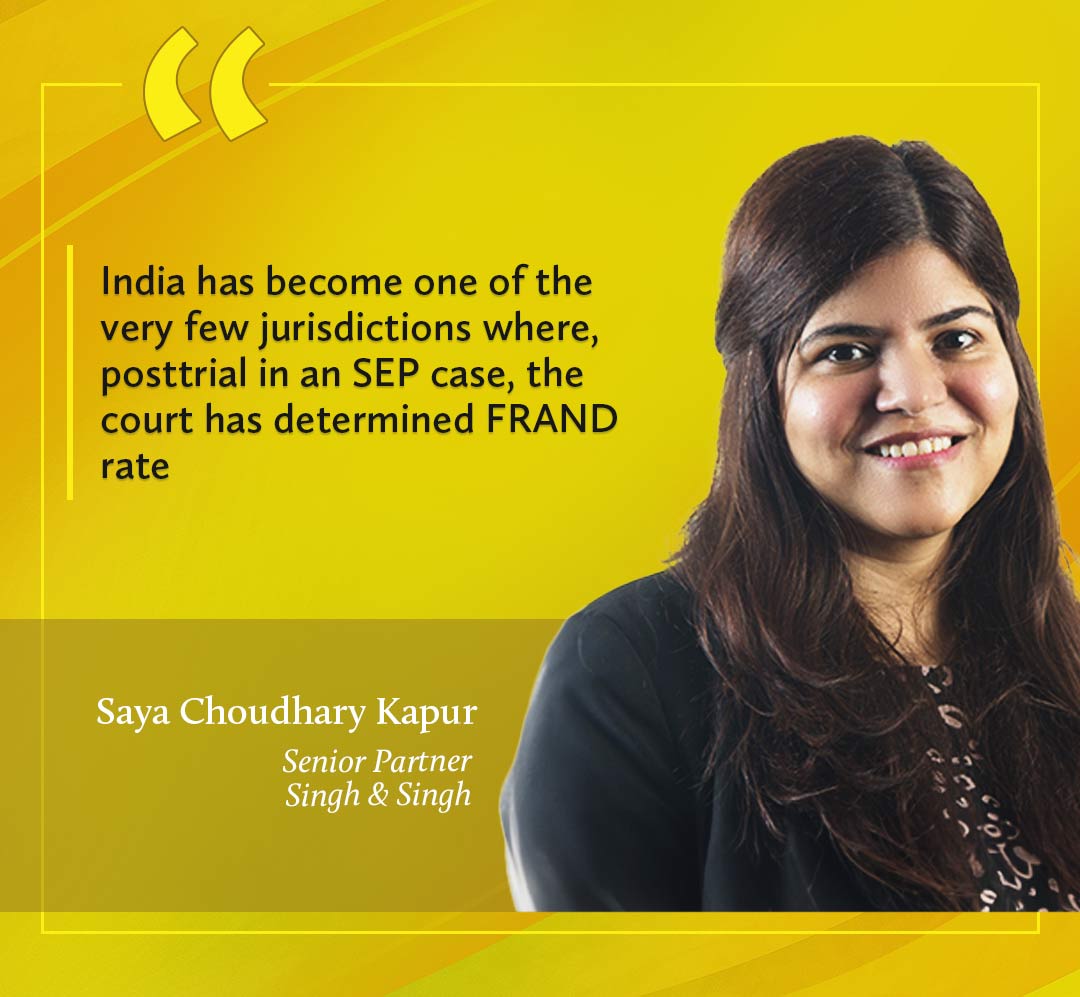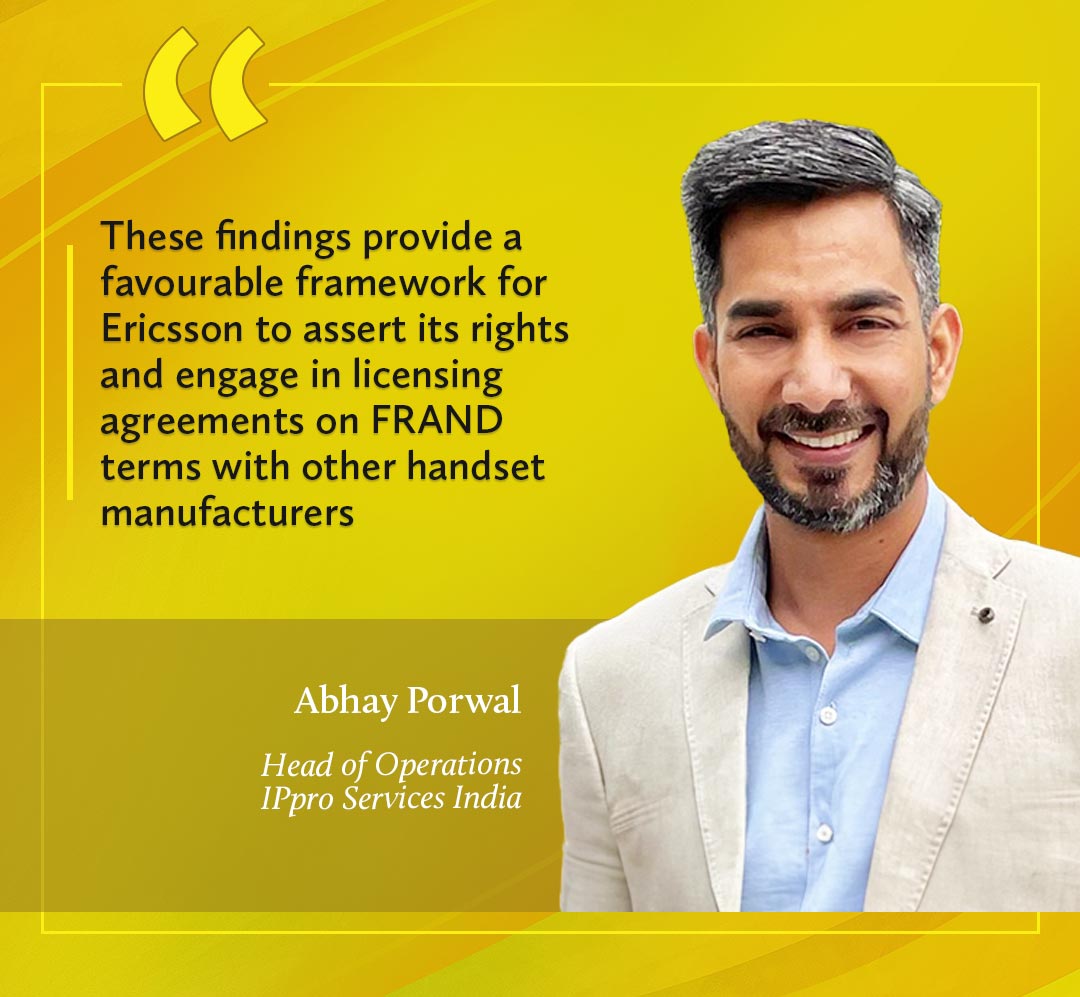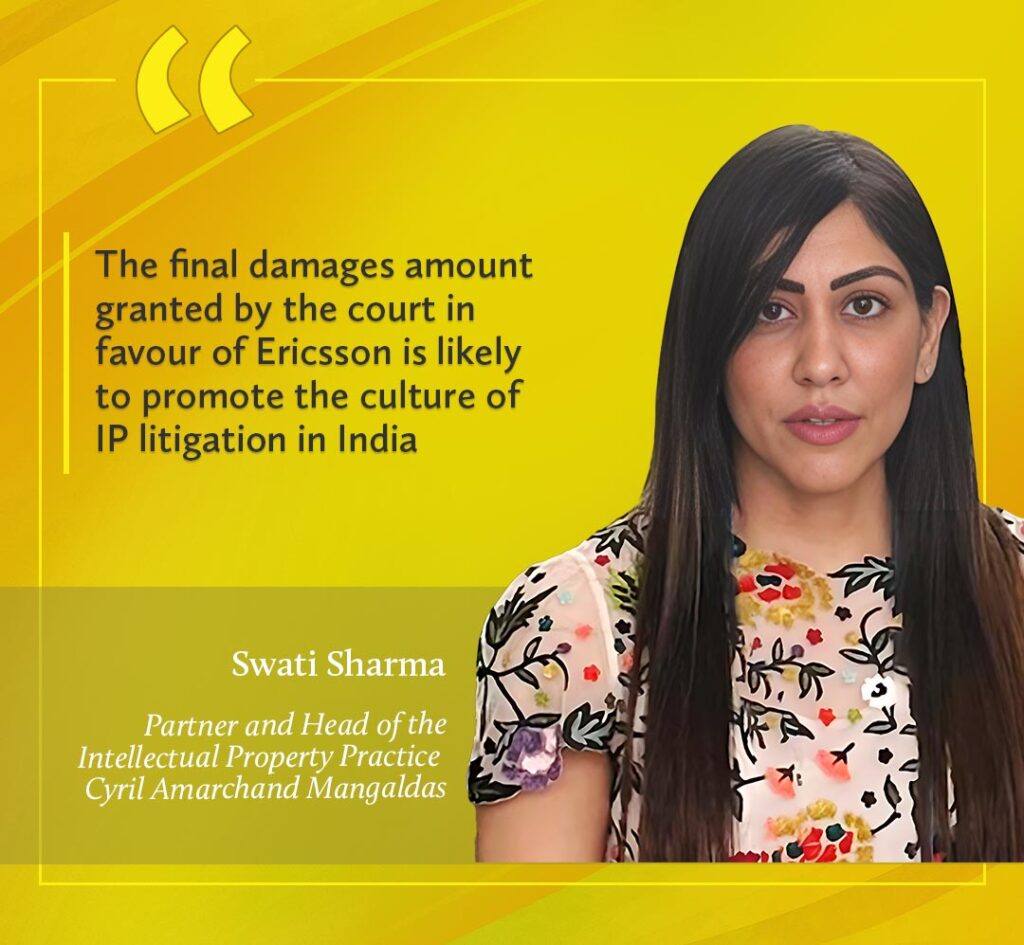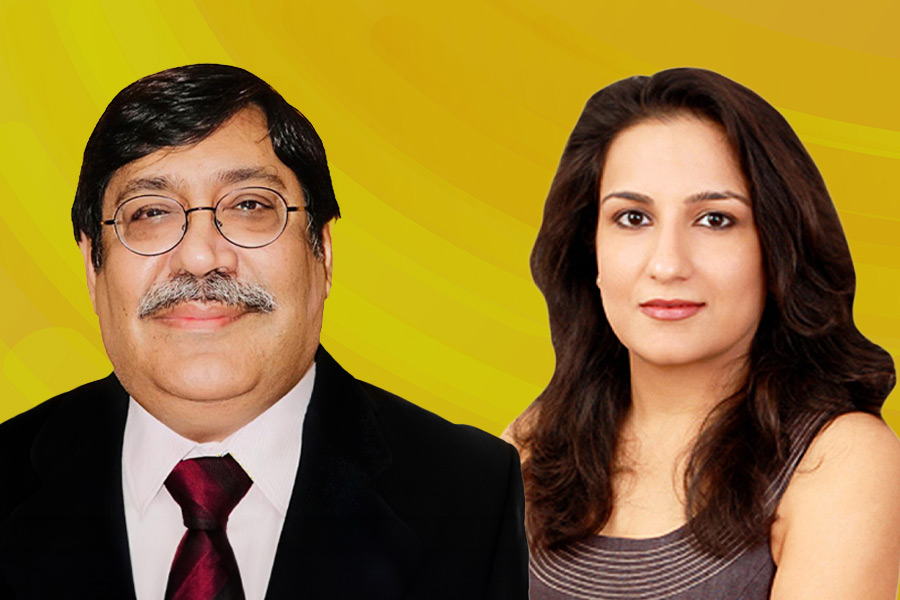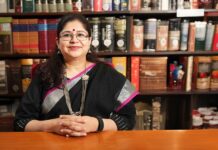The Ericsson v Lava judgment shows that courts do not condone unlicensed use of standard essential patents, and affirms the country’s position as a jurisdiction where IP rights are protected. Freny Patel reports
A turf war between smartphone manufacturers and standard essential patents (SEP) owners intensified in India in March as a Delhi High Court judge – relying heavily on foreign legal precedents – ruled that royalties for SEPs in India should be calculated on end-device pricing rather than chipset pricing.
Adjudicating in favour of Ericsson in a patent infringement lawsuit against Indian smartphone manufacturer Lava Mobiles, Judge Amit Bansal awarded the Swedish global major damages of INR2.44 billion (USD29.29 million) plus 5% annual interest until paid.
This is the highest amount of damages awarded in any patent or IP-related matter in India to date. The royalty rate was set at 1.05% on the net sales value of smartphones sold by the Indian mobile manufacturer from 1 November 2011 to 8 May 2020. Ericsson was also awarded the costs of the lawsuit.
The Ericsson-Lava judgment is only the second post-trial decision dealing with SEPs in the Indian context. The first post-trial SEP judgment came in July 2018, dealing with a Philips patent case over DVD technology.
In Ericsson-Lava, Delhi High Court acknowledged Ericsson’s entitlement to damages for the loss of royalties or licence fees.
“Had Lava entered into a licence agreement with Ericsson at the time it started selling its products in India, Ericsson would be entitled to royalties on FRAND [fair, reasonable and non-discriminatory] terms,” said Judge Bansal. “Since this was not done, Ericsson rightly claimed damages based on the amount of royalties it would have earned, calculated on FRAND rates.”
The 476-page Ericsson-Lava judgment says that Lava’s “lack of responsiveness to Ericsson’s offers, and even the court’s queries, collectively demonstrate a pattern of behaviour that is inconsistent with the principles of fair and constructive negotiation. Consequently, Lava can aptly be described as an ‘unwilling licensee’ in respect of Ericsson’s SEPs.”
Saya Choudhary Kapur, senior partner at Singh & Singh in New Delhi, represented Ericsson and applauded the judgment as “momentous” in dealing with SEPs and patents. Kapur says the judgment affirms India’s position as a jurisdiction where IP rights are recognised and protected. He praises India’s “robust judiciary system”, which does not discriminate between an Indian entity and a non-Indian entity.
“India has become one of the very few jurisdictions where, post-trial in an SEP case, the court has determined FRAND rate,” Kapur says.
Swati Sharma, partner and head of the intellectual property practice at Cyril Amarchand Mangaldas in New Delhi, says the size of the penalty is bound to improve India’s image internationally as an IP-friendly jurisdiction and may pave the way for other such litigations where the successful party is awarded substantial damages along with actual costs.
In addition to damages and legal fees, the court also addressed several critical issues on patent litigation including patentability, inequitable conduct, validity, exhaustion, standard essential patents and FRAND terms. Judge Bansal ruled that a licence fee should apply to all standard-compliant infringing devices and not just tested ones.
Abhay Porwal, the head of operations at IPpro Services India, a company founded by Nishith Desai, the managing partner of Nishith Desai Associates, says a major takeaway from the judgment is the importance of “having an ecosystem where other industry players have reasonable access to SEPs along with protecting the rights of the patent owners in enforcing the patents”.
Porwal, who also leads the patent drafting and analytics group at Nishith Desai Associates, says that in calculating the licence fee based on the end-product and not just the chips used in the devices, the court acknowledged the integral nature of Ericsson’s innovations within Lava’s devices. “These findings provide a favourable framework for Ericsson to assert its rights and engage in licensing agreements on FRAND terms with other handset manufacturers.”
The judgment – the first final judgment in a telecoms SEP matter passed after a full trial – goes into the issue of how to calculate damages in SEP cases. Noida-based Fidus Law Chambers’ managing partner Shwetasree Majumder points out this has “no precedent”.
The judgment holds that comparable licensing is a preferred method for calculating FRAND, and that FRAND calculations should be based on the end-user product and not on the smallest saleable patent practising unit (SSPPU), says Majumder.
Porwal adds the judgment clarifies that royalties can be based on what is paid by other similar market players.
Judge Bansal said that, “in assessing damages, the comparable licensing approach has been recognised as the preferred method for determining FRAND royalty rates” as it “relies on FRAND rates negotiated between parties in similar circumstances, making it a reliable benchmark for determining royalties for a prospective licensee”.
Majumder says that while the court relied on comparable licensing to arrive at a figure, “Lava’s demand to see comparable third-party agreements during negotiations was found to be a bad-faith ask”.
Judge Bansal said: “Lava kept on insisting that Ericsson provides its third-party licence agreements to Lava. Such an insistence by Lava was a blatant disregard of the confidentiality attached to these third-party agreements.”
Majumder says the court used the term FRAND in a general sense, without individually ruling on each component of FRAND. While a comparable licensing analysis tells one the rates or terms were non-discriminatory, she questions whether “fairness and reasonableness need independent assessments”.
“Given the history of how SEP litigation is weighted in India in the patentee’s favour, there are serious concerns on the fairness of the terms, what with the threat of an injunction hanging over an implementor’s head,” Majumder tells India Business Law Journal. “I absolutely think these form strong bases for an appeal.”
As Lava argued, patents cannot be regarded as essential by the mere filing of a declaration by a patentee, she says. “It is trite that the essentiality has to be independently proved through claim charts showing how claims of the asserted patents map onto the standards. The right to challenge the essentiality of each of the asserted patents cannot be deemed to be waived by an implementor simply because they were negotiating with the patentee.”
Lava says it might challenge the judgment, stating within days of the massive Delhi High Court judgment that it “will explore all viable legal avenues, including the possibility of filing an appeal”.
Rewind
In 2014, Ericsson filed a lawsuit against Lava claiming it was using Ericsson’s eight patents related to 2G and 3G technologies without a licensing agreement.
After years of negotiations, Lava filed a case against Ericsson in a district court in Noida, alleging that the Swedish tech giant was not making the patents available on a FRAND basis. Ericsson filed a lawsuit in Delhi High Court accusing Lava of infringement, and requesting a declaration that the rates offered by the Swedish company were indeed FRAND in nature.
Ericsson had also filed similar lawsuits against other smartphone makers in India, such as iBall, Intex, Micromax and Xiaomi.
The concept of SEP first entered India in 2011, when Ericsson objected to Kingtech Electronics (India) importing handsets. Ericsson alleged they infringed several of its SEPs and thus initiated SEP litigation in the country.
SEPs were introduced to settle disputes between smartphone companies. SEPs indicate that an invention conforms to a specific standard. Holding SEPs gives a significant competitive edge to the owner, which faces no competition until the SEPs expire and become public domain.
Information and communication technology manufacturers enter licensing agreements with handset manufacturers, where they charge a royalty fee based on the number of smartphones they sell. This is a global industry practice. Theoretically, SEP owners such as Ericsson and Nokia can leverage their bargaining power over downstream implementers by threatening to seek an injunction for patent violations in court.
Building blocks
Porwal says the Intex and Lava judgments have definitely started creating a framework for deciding SEP cases. The framework includes determining whether patents are SEPs, valid, novel and non-obvious; whether a patent holder offers licences on FRAND terms and if the alleged infringer is a willing or unwilling licensee.
Several other lawyers say the Ericsson-Lava judgment not only settles the law on these aspects but also gives rise to some broader issues.
“The judgment is a rich exploration of patent jurisprudence on the aspects of exhaustion, invalidity on the grounds of lack of novelty and inventive step and the bar on patentable subject matter,” says Rohin Koolwal, principal associate at Cyril Amarchand Mangaldas.
Sharma says the judgment “also clarifies the law on the applicability of the Limitation Act, 1963, to damages in patent infringement suits, which would be applicable to all patent infringement disputes and not just for SEPs”.
Porwal adds that the SEP cases in India have identified that an injunction can be granted “especially in case of alleged infringers indulging in delaying tactics”, and “even when patent validity is yet to be decided”. He says the judgment provides a comprehensive framework for determining infringements of SEPs, including mapping the standards to claims and the identification of standing to product implementation mapping.
Outcome
It remains to be seen whether Lava is prepared to challenge the judgment. Sharma says the judgment is a well-reasoned, gargantuan read of 476 pages, relying heavily on international jurisprudence but also on judgments of the Indian Supreme Court and division benches of Delhi High Court to support its findings.
Anticipating that the judgment is likely to apply to most SEP infringement disputes, she does not dismiss the possibility of a different single judge bench “to take a divergent view if it can be distinguished on facts, or if the bench disagrees with the views taken in this judgment. There is always room for argument, particularly in this field, which still only has a handful of judgments.”
Most lawyers that IBLJ interviewed agree the Ericsson v Lava judgment is likely to impact all patent infringement suits where invalidity and/or damages are issues.
Ericsson’s lawyer, Kapur, anticipates the judgment will improve timelines in patent-related matters in India.
“Out of the 30-odd patent cases related to SEPs that have been filed in India, about three or four have taken more time, while the rest have either been settled immediately after filing of a lawsuit or within a year or so,” Kapur says, adding the overall timing in India is not bad but, in cases where parties contest heavily, timelines tend to be longer than in other jurisdictions because of the sheer quantum of cases before the courts. Justifying why a rare two or three cases have seen delays, Kapur says: “parties go out on a tangent towards mediation or negotiations”. Nonetheless, there were interim arrangements in place safeguarding the patent proprietor as in the Ericsson-Lava case.
Koolwal says several other SEP holders “have been actively litigating before Delhi High Court in recent years including Nokia, Dolby, Philips and Interdigital … all of which are likely to benefit from the oft-debated points settled in the Ericsson v Lava judgment”.
In the more immediate future, “the Ericsson v Lava judgment is likely to have a decisive impact on the ruling in Ericsson v Intex, since the patents asserted are the same and the defences taken by Intex are also likely the same,” says Koolwal.
Sharma says SEP litigation before Delhi High Court has increased in recent years. Recent judgments, including the Ericsson v Lava judgment, have shone a light on the huge stakes involved in such matters, and the real impact IP infringement can have on businesses.
“The final damages amount granted by the court in favour of Ericsson is likely to promote the culture of IP litigation in India, and resultantly may improve IP compliance among industry players active in India who may carefully weigh the risks and rewards of infringing vis-à-vis licensing,” says Sharma.
Read the related article here:
Late but worth the wait? Decoding Ericsson v Lava verdict
The recent FRAND (fair, reasonable and non-discriminatory) rate-setting decision from Delhi High Court (DHC) in the dispute between Ericsson and the Indian mobile maker Lava shines a light on India as a country of interest for standard essential patent (SEP) litigation
For more related stories, visit law.asia.




